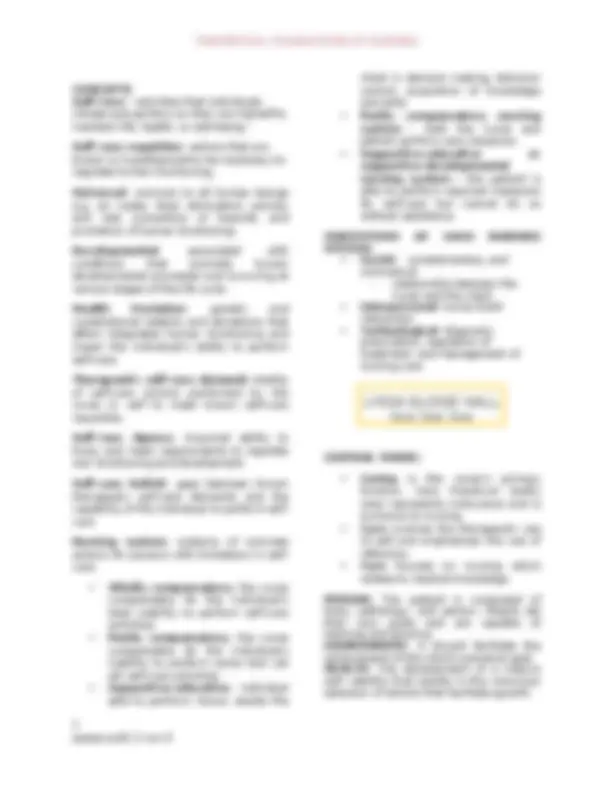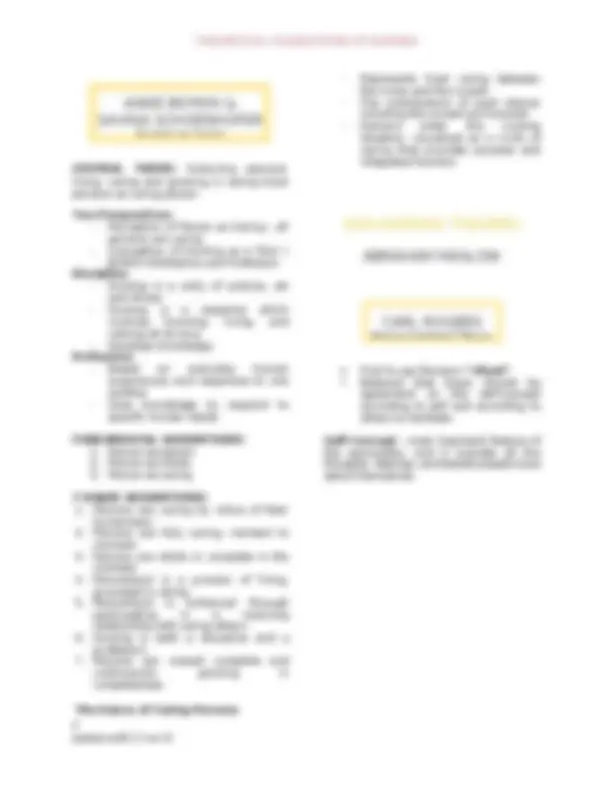




Study with the several resources on Docsity

Earn points by helping other students or get them with a premium plan


Prepare for your exams
Study with the several resources on Docsity

Earn points to download
Earn points by helping other students or get them with a premium plan
Community
Ask the community for help and clear up your study doubts
Discover the best universities in your country according to Docsity users
Free resources
Download our free guides on studying techniques, anxiety management strategies, and thesis advice from Docsity tutors
summary of lecture notes about nursing theories nur nursing
Typology: Lecture notes
1 / 4

This page cannot be seen from the preview
Don't miss anything!



Philosophy and Science of Caring Loss of her left eye 1997 and her husband’s death contributed to her development of the caring theory CENTRAL THEME
PERSON : One who is in need of the caring process to attain or maintain the health or die a peaceful death. The person has personal, internal, mental and spiritual mechanisms to allow the self to be healed ENVIRONMENT : Social environment, caring and the culture of caring which affects health HEALTH : It refers to the unity and harmony within the mind, body and soul. It is the degree of congruence between the self as perceived and the self as experienced NURSING : Nursing is an art and science of human to human care process with a spiritual dimension. It comprises the knowledge, thought, values, philosophy, commitment, and action.
Cultural Care Theory Culture - Learned, shared, and transmitted knowledge of values, beliefs, norms and lifeways of groups that guides in thinking, decisions, and actions in patterned ways. Culture care - Subjectively and objectively learned and transmitted values, beliefs and patterned lifeways = assist, support, facilitate to maintain, improve or deal with illness, handicaps or death CENTRAL THEME : Transcultural care - caring behavior, nursing care, health-illness values and patterns of behavior
Self-Care Deficit Theory CENTRAL THEME : Nursing and self-care activities PERSON : Humans with physical, psychological, interpersonal, and social components, meeting self-care needs through learned behavior. ENVIRONMENT : Environment is the modern society’s values and expectations. HEALTH : Wellness is the integrity of the individual, illness results in the person’s inability to maintain self-care. NURSING : Nursing is the giving of direct assistance to persons who are unable to meet their own self-care needs, developed through nursing education and experiences.
Nursing as Caring CENTRAL THEME: Nurturing persons, living, caring and growing in caring know persons as caring person Two Perspectives :
Person-Centered Theory First to use the term “client” Believed that there should be agreement on the self-concept according to self and according to others to facilitate Self-Concept - most important feature of the personality, and it includes all the thoughts, feelings, and beliefs people have about themselves.